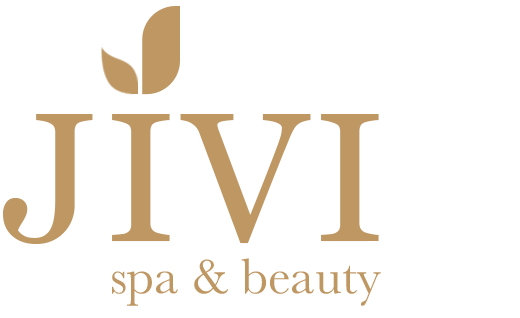The Anti-Ageing Properties of Ayurvedic Skincare
Let’s be honest, who doesn’t want to erase a few wrinkles to maintain a youthful look? Skincare is an important part of your beauty regimen, especially when you want to slow down ageing without undergoing cosmetic surgery.
Ayurveda has been practised for thousands of years and the anti-ageing properties of ayurvedic skincare can help us look younger for longer.
What Does Ayurvedic Skincare Entail?
Vayasthapana means maintaining youthfulness or arresting age. Vayasthapana herbs give support to the skin by balancing the skin, example, Centella Asiatica (brahmi, Indian pennywort) is rich in amino acids, beta carotene, fatty acids, and numerous potent phytochemicals. Extracts have been found to calm inflammation, speed wound healing, stimulate new cell growth, build collagen, and improve circulation. One of its many properties is to enhance collagen synthesis.
Varnya means to brighten skin glow. – Varnya herbs have the ability to enhance the radiance or brighten skin. Tyrosinase inhibition is the most commonly reported method of skin lightening and brightening. Dull skin is not considered youthful from an ayurvedic perspective. Varnya herbs include sandalwood, vetiver, Indian madder and Indian sarsaparilla to name a few.
Kantivardhaka promotes lustre, Sandhaniya (cell-regeneration), Vranaropana (deep healing) – red sandalwood and brahmi, Tvachya (nurturing) Gotu Kola, Silk Cotton Tree, Costus and Rose Petal are the most widely used, Shothahara (anti-inflammatory), Tvachagnivardhani (strengthening skin metabolism) and Tvagrasayana (retarding ageing) herbs that are considered beneficial for skin health.
Feeding the skin properly is very important to prevent ageing.
Ayurveda described Skin (twak) in seven layers (As per Acharya Susruta). The outermost layer called Avabhasini reflects the complexion and the quality of the Rasa Dhatu (nutrient fluid, the first of the seven tissues of the body). It also acts as a mirror as it indicates whether the physiology as a whole is balanced or imbalanced and whether there is inner health or disorder; it also reflects the aura of the individual. Mamsadhara is the innermost layer and is the platform for the skin’s stability and firmness. When this layer is in balance, the skin looks young and supple.
Using silk pillowcases to improve skin and hair health
Silk pillowcases have become increasingly popular in recent years due to their numerous benefits for both skin and hair. Firstly, silk pillowcases are much gentler on the skin compared to cotton or other synthetic materials. The smooth surface of silk allows your skin to glide across the pillowcase, reducing the risk of friction and irritation. This can be especially beneficial for people with sensitive skin or conditions such as acne or eczema.
In addition to being gentle on the skin, silk pillowcases are also beneficial for hair. The smooth surface of silk allows your hair to glide across the pillowcase, reducing tangles and knots. This can help to minimize breakage and damage, resulting in healthier and stronger hair. Silk pillowcases are also less absorbent than cotton, which means that they are less likely to strip your hair of its natural oils. This can help to keep your hair looking and feeling soft and nourished. This, in addition to our hair spa treatments, can significantly improve the appearance of your hair.
For a guide on how to choose the best silk pillowcase for your home, click here.
The 3 Important Body Tissues That Reflect Our Skin Health
According to Ayurveda, many factors decide skin health – three important body tissues that reflect our skin health – plasma (Rasa), blood Rakta and muscle (Mamsa). Plasma keeps the skin healthy, Blood helps in the detoxification process along with the liver, while muscles provide firmness to the skin. Effective skin-care herbs should provide support to all these three areas.
A few herbs that are known for their benefits in various skin conditions are aloe vera, neem, Yashti madhu (Glycyrriza glabra), Liquorice, turmeric
Anti-inflammatory (Shothahara) – protects the skin against allergens, inflammatory substances, chemicals and stress. External environmental factors can cause inflammatory skin conditions. Inflammatory skin is considered a prime cause of ageing – it forms a micro-scar that over time develops into a wrinkle or blemish. Inflammatory mediators such as leukotrienes and prostaglandins, cytokines and growth factors target skin texture, integrity and tone. The skin should be protected from the sun. Rose petals, Aloe Vera, Gum resin exudates of Boswellia serrata (Indian frankincense), Silver Bhasam are anti-inflammatory herbs that have been used in Ayurveda to manage several inflammatory conditions.
Tvagrasayana means literally ‘skin rasayana’, which refers to refined and powerful formulations to prevent ageing of the skin. Phyllanthus Emblica (amalaki), a potent antioxidant, rich in Vitamin C, tannins and gallic acid, is foremost amongst the rasayana herbs, it has properties like ajara (usefulness in ageing), ayushprada (prolongs cell life), sandhaniya (improves cell migration and cell binding) and kantikara (improves complexion)
What you use on your skin is as important as what you eat. Our aim is to provide you with skincare – “from the earth to your skin as is food for your body”
This article was originally published at https://www.omveda.com.au/anti-aging-properties-of-ayurvedic/

 Jivi Spa
Jivi Spa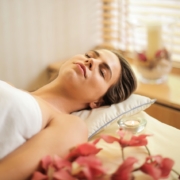 Jivi Spa & Beauty
Jivi Spa & Beauty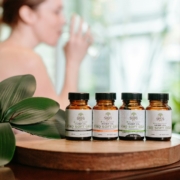 Jivi Spa
Jivi Spa FlySocial Digital
FlySocial Digital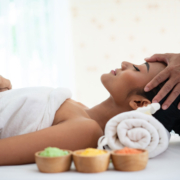 Jivi Spa & Beauty
Jivi Spa & Beauty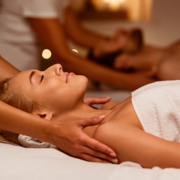 Jivi Spa & Beauty
Jivi Spa & Beauty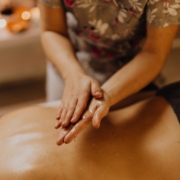 Jivi Spa & Beauty
Jivi Spa & Beauty